Caribbean Adventures: Experience Puerto Rico with Yello
by Karen Rollins Jun 24, 2019
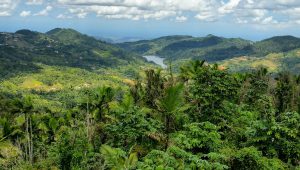
I’ll confess that I didn’t know much about Puerto Rico before a friend asked me if I’d like to go there on vacation.
She said it’d be warm, and the food was supposed to be good, so I was already interested, but I was also slightly sceptical, mainly because I wondered if the country had completely recovered from the impact of Hurricane Maria in September 2017.
Hurricane Maria was a Category 5 storm that also devastated Dominica and the British Virgin Islands. In Puerto Rico, it caused $90 billion (US) dollars of damage to homes and businesses and the official death toll was just over 3,000 people.
It’s difficult to overstate how much the island was scarred by Hurricane Maria but nearly a year and a half after the storm Puerto Rico is slowly getting back on its feet, and tourism is a key factor in its recovery.
Exploring Old San Juan
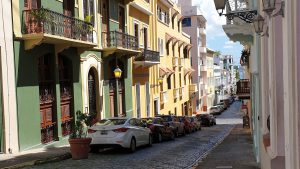
We started our week-long adventure in Old San Juan which is a must-see on any visit to the island. Old San Juan is a historic district in the municipality of San Juan. It has beautiful architecture, cobbled streets, a wide selection of restaurants, bars and coffee shops and plenty of places to just sit and watch the world go by.
You can walk around Old San Juan in one afternoon because it’s quite small, and once you get used to the crisscrossing road scheme, it’s hard to get lost.
The area is dominated by two impressive forts built during the Spanish occupation – Castillo San Felipe del Morro San Juan (commonly known as El Morro) and Castillo de San Cristóbal (St Christopher’s Castle) on the northeast edge.
The Spanish were obsessed with keeping hold of Puerto Rico and spent over 400 years fighting off attacks from their European rivals using these two forts.
I toured St Christopher’s Castle and it’s certainly worth the $12 (US) entrance fee. The fort was mainly constructed from 1765-1785 and its undulating landscape, which includes various moats and tunnels, is an imposing example of how best to slow down and frustrate the enemy.
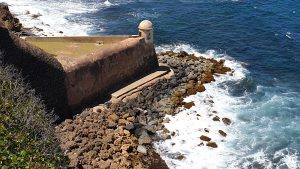
The fort has played a significant role in Puerto Rico’s colourful history over the centuries. It was primarily built by enslaved Africans, fired the first Spanish shot of the Spanish-American War and during WWII the United States added several fortifications.
I recommend taking your time to fully appreciate the history of the castle and the amazing views it offers of Old San Juan and cruise ships docked in San Juan Bay. Wear clothing that will protect you from the sun, because most of the site is outdoors, and carry at least one bottle of water.
I walked around for about two hours and still felt as if I could’ve stayed longer.
After the castle we strolled along Paseo de la Princesa which is a great place to begin a walking tour of Old San Juan. The promenade dates back to 1853 and features elaborate sculptures and water fountains as well as art deco buildings and plazas.
One of the most impressive fountains is Fuente Raices, which reflects the roots of Puerto Rican culture made up of Tainos (natives), Spaniards and Africans.
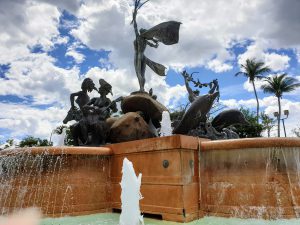
At the end of the promenade is the bright red San Juan Gate, named after John the Baptist, which was built in 1635 and takes visitors into the heart of the Old City.
One of the first landmarks you’ll face inside the Old City is the Metropolitan Cathedral Basilica of St John the Baptist. This cathedral sits across from the beautiful El Convento Hotel (which is also worth checking out) and is open to anyone who wants to stroll around for a small donation.
The history of the cathedral goes back to the 16th Century and it’s known as Puerto Rico’s ‘grandest religious building’. I was impressed by the stained-glass windows, painted archways and ceilings and the tomb of the famous Spanish explorer Juan Ponce de León, who was the first governor of Puerto Rico, and is best known for his search for the fabled Fountain of Youth.
What about nightlife?
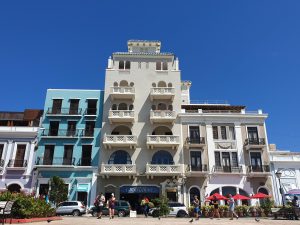
In the evening, visitors to San Juan are spoilt for choice in terms of restaurants, clubs and bars but I recommend the vibrant district of Santurce.
Santurce is San Juan’s biggest and most densely populated area with over 95,000 residents. It’s a short taxi ride from Old San Juan, and isn’t as historic or pretty, but from Thursday to Saturday it’s one of the best places to dance the night away.
There are plenty of open-air bars, eateries and karaoke venues located in Plaza del Mercado or La Placita. In the day this area is a traditional market site, but once the sun sets it comes alive with singing and salsa dancing.
We soaked up the atmosphere and sipped the most perfect mojito (outside of Cuba) at Davide’s, a restaurant operated by Italian chef Davide Pugliese, who briefly came outside to chat with us. Davide is a larger-than-life character who divides his time between Puerto Rico and the British Virgin Islands.
The party gets into full swing by 11pm with locals and tourists mingling together. This is one of the best spots to get a genuine taste of Puerto Rican hospitality and friendliness.
Into the mountains
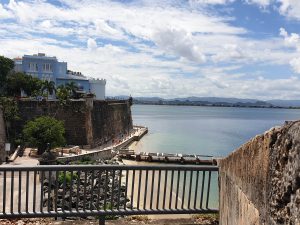
After a couple of days in Old San Juan, we hired a car and went off-the-beaten-track into the mountains.
Puerto Rico has a mainly mountainous landscape which is ideal for anyone who enjoys exploring and getting up close with nature. There are hiking trails, forests, canyons and waterfalls and all of them are unique, although the windy roads are a challenge!
We decided to stay in an Airbnb apartment situated close to the town of Aibonito (pronounced ei-bo-NEE-to) which is one of the highest points on the island (2,401 ft above sea level).
Aibonito is in the Cayey mountain range and actually holds the record for the lowest temperature ever recorded in Puerto Rico.
If you plan to stay in Aibonito there are several attractions close by, including:
– San Cristobel Canyon
– Church San Jose of Aibonito
– Dona Juana Waterfall
– Toro Negro Forest
– Lago de Matrullas
We visited Toro Negro Forest and found an extremely helpful teenage guide called Alan who loves the forest so much he travels up at the weekend from the city of Ponce to help his aunt and other volunteers at the site.
He told us more about the area and recommended a short hike to a nearby observation tower from where you can see the Caribbean Sea and the Atlantic Ocean.
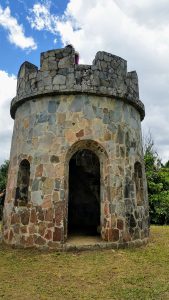
It took about 45 minutes to hike to the lookout point and the views made it more than worth it. This is one of the highest towers on Puerto Rico and you can climb up the stairs of this miniature castle for a spectacular, uninterrupted view of the mountains and the coast.
Afterwards we visited the Dona Juana Waterfall which is a short drive from the forest. The waterfall is strangely situated next to a road, so you have to be cautious where you park and when crossing over, but it’s another picturesque and unusual site.
Where shall we eat?
There are plenty of eating options in and around Aibonito and I had one of the best meals of my entire trip at ‘La Sombra Orocovis’.
This restaurant is famous for its ‘Longaniza’ – a type of Spanish sausage similar to chorizo, made from pork and chicken or a mixture of both. The side dishes include rice and beans or tostones (twice-fried green plantains) and are also tasty. Even though you wait a while to be seated, the food is delicious, and the views of the mountains are unbeatable.
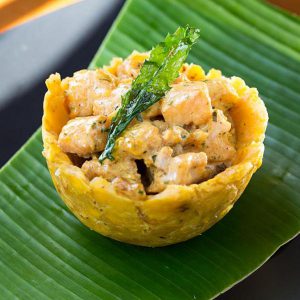
At another local restaurant called ‘El Balconcíto Criollo Aibonito’, we had Puerto Rico’s signature dish Mofongo, which is a type of pie made from deep-fried green plantains and filled with a choice of meat, fish or vegetables. In fact, Puerto Ricans eat so many plantains they top up local production with imports from Costa Rica and the Dominican Republic.
After our meal we spoke to two sisters who told us a bit about what life was like immediately after Hurricane Maria. One of them was on the island when the storm hit and described it as “the scariest experience I’ve ever been through.” Both suffered substantial damage to their properties and were without running water and electricity for two months.
Even when they managed to get supplies sent from their children, who live in the US, most of it was stolen before it arrived at their door. But they believe the storm brought the community together as they leaned on each other during one of the toughest moments they ever faced.
Time for the beach
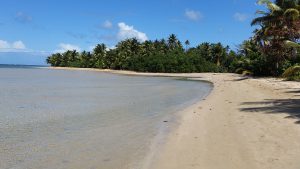
We left Aibonito after a couple of days and drove northeast to the beach town of Luquillo which is nestled between the Atlantic Ocean and El Yunque National Forest.
This quaint, seaside town was founded in 1787 and is home to about 20,000 people. The beaches in Luquillo are known as some of the best beaches in Puerto Rico and are only about a 35-minute drive from San Juan.
We arrived on Sunday afternoon and there were lots of people who’d driven down for the day to escape the hustle and bustle of the city.
If you don’t mind walking you can easily go from one beach to another in Luquillo without leaving the sand. I walked from La Pared, to Playa Azul, Balneario Monserrate and on to Luquillo beach in about 55 minutes.
La Pared is popular with surfers because of its wind and waves but as you move closer to Luquillo beach, the water becomes calmer and there are plenty of nice spots to lay down on your beach towel and relax.
At Luquillo beach you’ll find the famous Los Kioskos De Luquillo, also known as street food kiosks, which offer a genuine taste of Puerto Rican cuisine for a very reasonable price. This colorful strip is located just off the highway and features around 60 restaurants providing every kind of seafood along with variations on the island’s classic Mofongo dish.
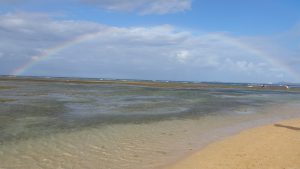
In the evening we strolled to Luquillo’s town square to admire some of the historic buildings and sip a mojito at ‘Boardriders Surf & Rum Shack.’
As the sun set on our Puerto Rican adventure, I scrolled through the photos I’d taken and smiled at the memories they brought back.
I truly enjoyed exploring Puerto Rico and hope to go back again soon.
—
Planning a trip overseas? Search Find Yello for local travel agents.








